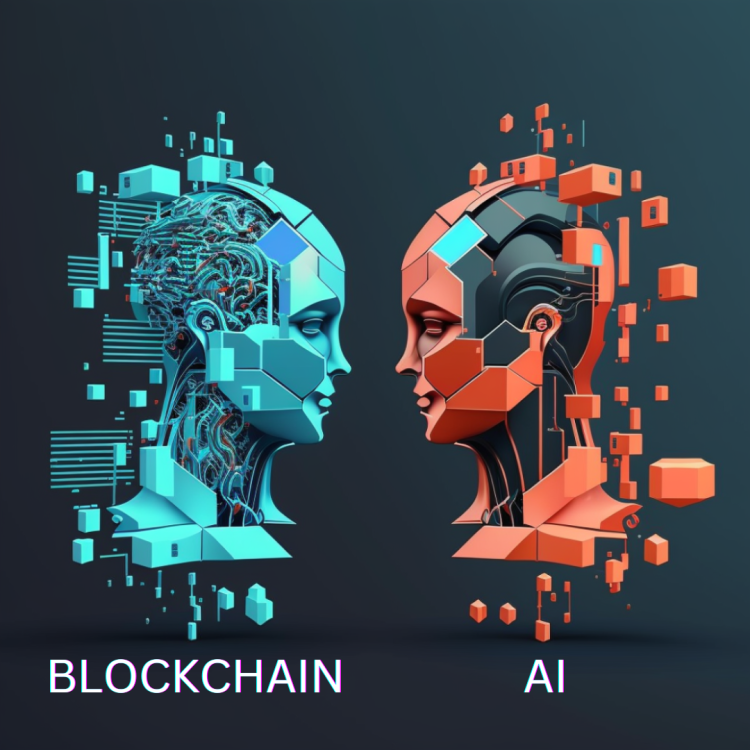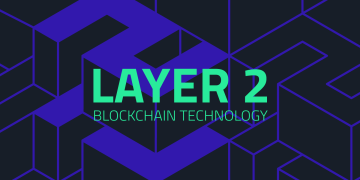In the last few years, blockchain technology and artificial intelligence (AI) have emerged as two of the most transformative forces in the world of technology. Blockchain has revolutionized fields like finance, supply chain management, and digital ownership with its decentralized, transparent, and secure systems. AI, on the other hand, has dramatically advanced industries ranging from healthcare and manufacturing to marketing and entertainment by enabling machines to learn, adapt, and perform tasks that once required human intelligence.
While both blockchain and AI have individually reshaped industries, their integration could usher in a new era of technological innovation. But how can these two technologies work together? What challenges must be overcome for them to reach their full potential? And will their fusion truly lead to a revolutionary shift in the way we interact with technology and the world around us?
In this article, we will explore the synergy between blockchain and AI, discuss use cases where these technologies can complement each other, and consider the future impact of their combination on sectors such as data privacy, automation, and decentralized applications.
What Is Blockchain, and What Is AI?
Before delving into their integration, it is essential to understand the fundamentals of each technology.
Blockchain Technology: A Brief Overview
At its core, blockchain is a distributed ledger technology that enables the secure, transparent, and immutable recording of data across a network of computers. Unlike traditional databases, where data is stored in a centralized location, blockchain ensures that no single party has control over the data, making it decentralized.
- Key Features of Blockchain:
- Decentralization: No single entity controls the data.
- Immutability: Once data is added to the blockchain, it cannot be altered.
- Transparency: Transactions are visible to all participants in the network.
- Security: Cryptographic techniques ensure that data is secure and tamper-resistant.
Blockchains are widely used in cryptocurrencies (e.g., Bitcoin, Ethereum) but also have applications in supply chain management, smart contracts, and digital identity verification.
Artificial Intelligence (AI): A Brief Overview
AI refers to the simulation of human intelligence in machines that are capable of performing tasks that typically require human cognition, such as problem-solving, learning, speech recognition, and decision-making. AI systems utilize algorithms, data, and modeling to understand patterns and improve performance over time.
- Key Types of AI:
- Machine Learning (ML): A subset of AI that allows systems to learn from data without being explicitly programmed.
- Natural Language Processing (NLP): Enables machines to understand and interact with human language.
- Computer Vision: Allows machines to interpret and make decisions based on visual data.
- Robotic Process Automation (RPA): Uses AI to automate repetitive tasks in business processes.
AI is being used across industries, including healthcare, finance, transportation, and customer service.
How Blockchain and AI Can Complement Each Other
The combination of blockchain and AI has the potential to address significant challenges within each technology while unlocking new opportunities. Here’s how:
1. Enhancing Data Privacy and Security
AI systems rely on vast amounts of data to train models, and the quality of this data is paramount for creating accurate and effective AI solutions. However, data privacy is a growing concern, especially in an age of increasing surveillance and data breaches.
Blockchain offers a secure and transparent way to handle sensitive data. By storing AI-generated data on a blockchain, businesses can ensure that the data remains tamper-proof, immutable, and transparent. Additionally, blockchain’s decentralization removes the risks associated with data being controlled by a single entity, potentially reducing the likelihood of misuse or breaches.
- Example: In healthcare, blockchain can store patient data, while AI can analyze that data for insights. This ensures that the data is protected, while still enabling AI to provide valuable predictions and diagnoses.
2. Trustworthy AI Models and Algorithm Transparency
One of the main criticisms of AI is the lack of transparency in how models make decisions, especially in high-stakes fields like finance and healthcare. AI systems, particularly deep learning models, are often described as “black boxes” because their decision-making processes are difficult for humans to interpret.
Blockchain’s immutable ledger can be used to track and record the development and training of AI models. By storing the versioning of AI algorithms and their corresponding datasets on a blockchain, it would be possible to trace the decision-making process and ensure that models have been trained ethically, without bias, and in compliance with regulations.
- Example: In autonomous vehicles, blockchain can record every interaction and decision made by the AI system, allowing for full audibility and accountability in case of accidents or malfunctions.
3. Decentralized AI Networks
Currently, most AI systems are controlled by centralized entities such as tech giants (Google, Amazon, etc.). This raises concerns about data monopolies and centralized control over AI technology.
Blockchain can enable the creation of decentralized AI networks where multiple parties can contribute data, computational power, and AI models in a transparent, trustless manner. These decentralized networks allow for greater collaboration and innovation in AI without any single entity controlling the entire system.
- Example: Ocean Protocol uses blockchain to create a decentralized data marketplace that allows users to share and sell data for AI models, creating more open access to the data that powers AI.
4. Smart Contracts and Autonomous Systems
Smart contracts are self-executing contracts with the terms of the agreement directly written into lines of code. They run on blockchain networks and execute automatically when predefined conditions are met.
AI can enhance the functionality of smart contracts by enabling them to interact with the real world through sensors and data feeds, making these contracts smarter and more autonomous. AI algorithms can analyze external data (such as market conditions, weather patterns, or IoT data) to trigger smart contract actions in real-time.
- Example: In supply chain management, AI could monitor inventory levels or shipment statuses, while a blockchain-based smart contract automatically triggers payment or delivery actions when conditions are met.

Use Cases of Blockchain and AI Integration
1. Healthcare: AI-Driven Diagnosis with Blockchain-Based Privacy
AI is already making strides in healthcare, from diagnosing diseases to predicting patient outcomes. However, the sensitive nature of healthcare data presents challenges for its secure sharing and analysis.
- AI Role: AI can analyze medical records, imaging, and patient data to assist in diagnoses, recommend treatment options, and predict disease progression.
- Blockchain Role: Blockchain can provide secure storage and privacy protection for patient data. It can also track consent for data usage, ensuring that AI models are trained on ethically sourced and authorized data.
2. Finance: Decentralized AI for Fraud Detection
The financial sector is increasingly leveraging AI for fraud detection, credit scoring, and algorithmic trading. However, the lack of transparency and reliance on centralized entities can expose the system to risks.
- AI Role: AI can analyze transaction data to detect patterns of fraud, money laundering, and suspicious activity.
- Blockchain Role: Blockchain can provide immutable records of transactions, allowing AI to analyze a trustworthy dataset. A decentralized ledger ensures that fraudulent activities are harder to manipulate or hide.
3. Autonomous Vehicles: Trustworthy Decision-Making
In the case of autonomous vehicles, AI is responsible for decision-making regarding navigation, speed, and safety. Blockchain can ensure that the decisions made by AI systems are auditable and transparent.
- AI Role: AI processes data from cameras, sensors, and GPS to guide the vehicle’s behavior.
- Blockchain Role: Blockchain can track and record each decision made by the AI, ensuring full transparency in the event of an accident or failure. This creates trust in autonomous driving systems.
Challenges in Blockchain and AI Integration
Despite the exciting possibilities, there are challenges in merging blockchain and AI:
- Data Privacy: While blockchain ensures data security, integrating AI with blockchain requires balancing data privacy with data accessibility. AI models need access to large datasets, but blockchain’s transparency could compromise sensitive information.
- Computational Complexity: AI requires substantial computational power, and the integration with blockchain could introduce performance bottlenecks, particularly if the blockchain network is not optimized for high-speed processing.
- Interoperability: Blockchain and AI systems are often built on different technologies and infrastructures, making it challenging to create seamless interoperability between the two.
- Regulation: The combination of AI and blockchain raises significant regulatory questions, particularly concerning ethical AI, data privacy laws, and autonomous decision-making.
Conclusion: Will Blockchain and AI Lead the Next Wave of Innovation?
The integration of blockchain and AI holds the potential to revolutionize multiple industries, driving efficiency, security, and transparency while enabling new business models and decentralized systems. Whether in healthcare, finance, autonomous vehicles, or supply chain management, combining blockchain’s strengths in security and decentralization with AI’s power of automation and decision-making could indeed lead to the next wave of technological innovation.
However, achieving this will require overcoming significant technical, regulatory, and ethical challenges. With the right advancements and collaborations, blockchain and AI could not only complement each other but could create a new technological ecosystem that enhances trust, innovation, and collaboration across industries.
As the world moves toward greater automation, decentralization, and data-driven decisions, the fusion of blockchain and AI is poised to be a key driver of the next technological revolution.


















































